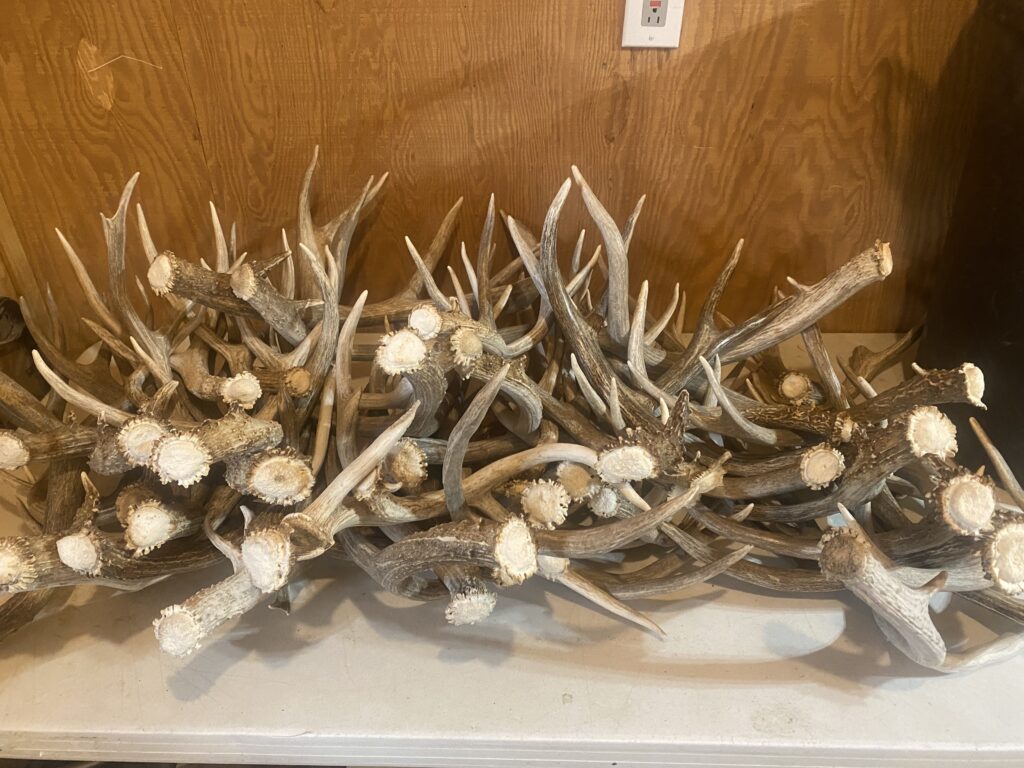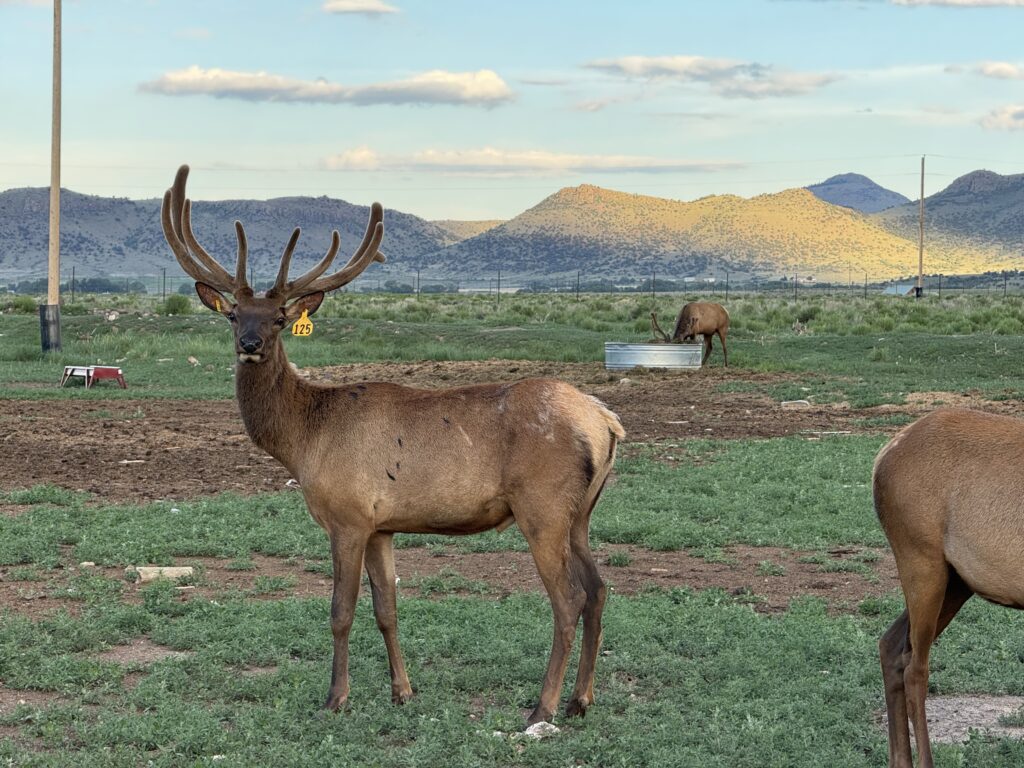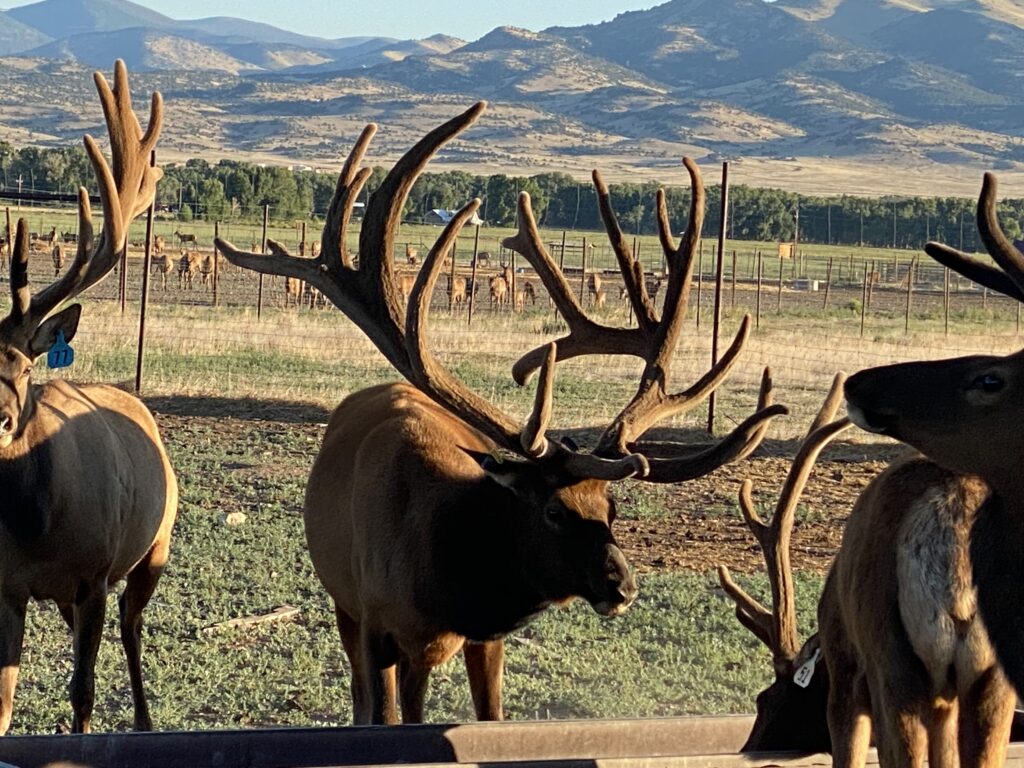ELK MEAT:
Elk meat is not only tasty, but is lower in fat, cholesterol, and calories than “traditional” red meats. It also has more omega-3 fatty acids, higher conjugated linoleic acid (cancer fighting agent) and more beta-carotene. On top of the health benefits, it has a better flavor! For these reasons, the demand for elk meat is increasing among health conscious consumers.
Click here for those Colorado Elk Breeders who sell elk meat.
VELVET ANTLER:
What is Velvet Antler?
“Velvet” is the word used to describe the elk antler before it has started to calcify – velvet antler comes from the semi-hard inner core of the elk’s antler during this stage. It’s harvested before the antler begins to calcify and regenerates annually. Elk Antler is harvested from domestic elk raised under strict conditions without harming these beautiful creatures. It is an all-natural and a renewable product from live animals that regenerate their antler every year.
Why use Velvet Antler?
In the Orient, velvet has been used for over 2,000 years as a natural remedy for a variety of ailments. In North America velvet is marketed as a dietary supplement. Research promotes the following abilities of velvet antler: reduce inflammation, help relieve arthritis pain, influence body metabolism, boost energy and endurance, support immune function, protect damaged tissues, and improve blood, liver and kidney function.
Numerous old and current studies have been conducted and articles and manuscripts have been written about the benefits of velvet antler. Although nobody is certain WHY velvet works so well in so many different areas, one of the working theories is that our diets are lacking in the essential nutrients that are needed for our bodies to properly work. Velvet antler supplement gives the body what it needs to work properly, thus allowing it to fix itself.
Click here for those Colorado Elk Breeders who sell velvet antler.
HARD ANTLER:
Hard antler” refers to elk antlers that have calcified. Each set of antlers, shed annually by bull elk, is unique.
Artists create beautiful items from these wonders of nature. In antler art, no two pieces are exactly alike because each is made from a natural, distinctive item.
The graceful chandeliers, coffee tables, and lamps created from hard antler complement many styles of furnishings. Some elk breeders sell sheds or harvested trophy antlers to companies that manufacture and sell antler art, and some create their own products to sell by mail order or at local outlets. Hard antler is also used to produce decorative items such as knives, jewelry, and buttons.
Click here for those Colorado Elk Breeders who sell hard antler and/or have hard antler products for sale.
TROPHY HUNTS:
Elk hunting ranches offer interested individuals a hunting experience in habitat that is comparable to that of free-ranging elk – large areas with natural cover. Through the selective breeding process, the antlers of bull elk found in elk preserves are considerably larger and more massive than found in the wild.
Elk preserves allow physically challenged hunters an experience otherwise unavailable to them. They also provide a safer hunting experience.
The Colorado Elk Breeders Association members who offer trophy hunts abide by both the North American Elk Breeders Association’s “Ethics of Enclosure Hunting” and SCI’s Standard for Hunting Behind High Fences.
Click here for those Colorado Elk Breeders who operate trophy hunting ranches.
SCI Releases Standards for Hunting Behind High Fences
The SCI Board of Directors voted to adopt these standards at the Washington, D.C. board meeting in May 2006.
The North American Hunting Preserves – Fair Chase Standards
Recreational hunting and the concept of “fair chase” has been linked for as long as recreational hunting has existed. However, the terms and conditions of what constitutes “fair chase” when hunting is conducted within a high fenced area has never been fully or clearly defined SCI believes that the following conditions must be met, or exceeded, in order for the concept of “fair chase” to apply for hunting mammals within high fenced areas in North America:
- The animals hunted must have freely resided on the property on which they are being hunted for at least six months, or longer.
- The hunting property shall provide escape cover that allows the animals to elude hunters for extended periods of time and multiple occurrences. Escape cover, in the form of rugged terrain or topography, and/or dense thickets or stands of woods, shall collectively comprise at least 50% of the property.
- The animals hunted must be part of a breeding herd that is a resident on the hunted property.
- The operators of the preserve must provide freely available and ample amounts of cover, food and water at all times.
- Animals that are to be hunted must exhibit their natural flight/survival instincts.
- No zoo animals, exhibited animals or tame animals are to be hunted.
- No hunting or selling of hunting rights to a specified animal.
- Hunting methods employed cannot include driving, herding or chasing animals to awaiting hunters.
- Every effort must be made to utilize all meat commonly consumed from a taken animal.
- The minimum amount of land necessary to meet these requirements varies by region, terrain and habitat type. Setting a standard minimum area is unlikely to be realistic. However, SCI recommends that state/provincial wildlife management agencies work with the operators and the hunting community within their area to establish specific regulations to guide the operation of hunting preserves.


